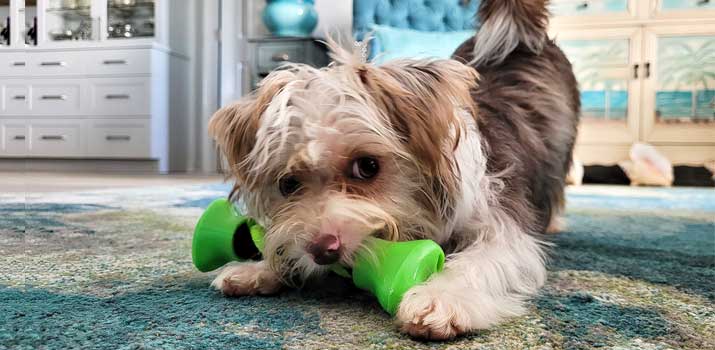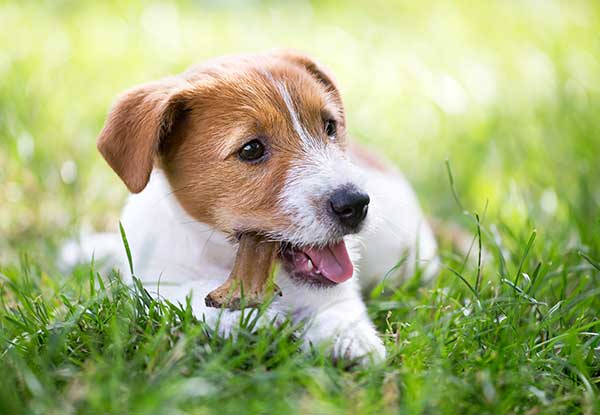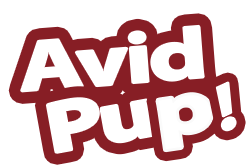
Is there anything more iconic than a puppy and a bone? From old cartoons to modern movies, you always see dogs chewing bones. But when is the right time to start giving them to your pup?
Adult dogs love chewing on bones. Their jaws are strong, and their adult teeth are usually fully capable of slowly gnawing on tough bones. But puppies are much different.
They’re younger and don’t have the strong muscles and tough jaws to consume bones in the same way as their adult counterparts. As a result, you have to be more careful about when you introduce puppies to bones and what bones you provide.
Not sure where to start? You’ve come to the right place.
Can Puppies Chew on Bones?
Let’s start with the basics: Are bones safe for puppies?
In short: Yes!
Bones and chewable treats are a common point of debate. You’ve likely heard horror stories about rawhides or pig ears. It doesn’t matter what you give your dog to chew on. There are always inherent risks.
Some treats are safer than others, but dogs can choke on a bone or experience health problems during digestion. So where do bones fall into that mix?
You’ll be happy to know that bones are considered good for both puppies and adult dogs. There are some caveats we’ll get into later. But for the most part, bones are a fantastic treat!
Not only are they delicious, but they can benefit your puppy in many ways. Chewing on a bone is a great way to build up those jaw muscles as the rest of the body grows. It can also alleviate the gum pain that puppies often experience during teething.
Introducing bones at the right time can also prevent your pup from chewing on your shoes and furniture!
Overall, bones have a lot to offer. That said, there are many considerations to consider before giving your puppy a bone.
Related: Why Does My Dog Eat My Underwear?
What Types of Bones Can a Puppy Chew Safely?

Not all bones are made equal. Adult dogs have more options due to their developed teeth and jaws. However, puppies have an increased risk of injury. Therefore, you must choose your bones carefully. Here are a few things to look for.
Size
The most important thing to do when selecting a bone is to choose the appropriate size. Puppies are still learning. While they have instincts, many puppies don’t understand the inherent dangers of chewing on items.
All your puppy knows is that bones are tasty and fun to chew on! It’s common for young dogs to be so smitten with the experience that they try to gobble up bones in one bite.
That’s the last thing you want! Avoid small bones at all costs.
Ideally, the bones you provide should be the size of their head or bigger. Anything small enough to fit entirely into your puppy’s mouth is a no-go. If you provide a small bone, your pup can swallow it whole and choke!
Texture
The texture is another big factor to consider. Bones are available with a few different textures. Some are coarse and bumpy. Meanwhile, others are smooth.
The best choice for puppies is a smooth bone with rounded edges because it encourages chewing without causing injury. Rougher bones are more prone to damaging delicate teeth.
Firmness
Firmness is one of the most important things to pay attention to when choosing a bone for a puppy. Ultra-hard bones are not good for puppies. Again, it comes down to delicate teeth and a high risk for damage.
Avoid weight-bearing bones. We’re talking about bones that support an animal’s weight. They are prone to splintering, which could cut your puppy’s gums and create a choking hazard.
You should also steer clear of hard marrow bones. These bones are great for adults, but they are far too firm for the weak jaws and delicate teeth of a growing puppy.
Breed
Finally, think about your dog’s breed! Some breeds are natural-born chewers. All dogs are capable of chewing on toys and treats. But some have more delicate teeth and jaws than others.
For example, a tiny Pomeranian has a small mouth. The breed is also susceptible to dental problems.
Meanwhile, German Shepherds and Rottweilers have strong jaws and a penchant for aggressive chewing.
What Bones Are Good for Puppies, and What Should You Avoid?
With the earlier considerations in mind, you have a few options for your puppy’s first bone. The first and easiest option is to pick up a puppy-safe bone at your local pet store.
There are plenty of bone-like chew treats available. While not real bones, they’re usually softer and more nutritious.
Alternatively, you can choose a non-weight-bearing bone from a butcher. Beef bones are usually the go-to. Stick with smooth bones with rounded edges bigger than your puppy’s head to minimize risks.
Now, let’s move on to bones you should avoid.
Never give your puppy cooked or frozen bones. Frozen bones are too hard and can damage your pup’s teeth. Storing bones in the freezer is fine, but you need to thaw them before giving them to your puppy.
Cooked bones are dangerous because they are brittle and easy to splinter. The cooking process changes the firmness and texture. Always stick to raw bones for the best results.
Finally, avoid poultry bones from chicken or turkey. They’re much smaller than beef or pig bones. Plus, they’re more brittle and easier to splinter.
When Can Puppies Start Chewing Bones?
Generally, vets say it’s fine to start giving your puppy bones when they’re about 12 weeks old. However, the timing can vary. It all depends on the teething cycle.
When your puppy leaves the womb, they have no visible teeth. Like a human baby, it’s all gums! Teeth come much later. For most dogs, it’s around four to six weeks that the deciduous teeth emerge from the gums. Also known as milk teeth, deciduous teeth are sharp. However, they’re not very strong.
Puppies typically have 28 milk teeth. When they develop, you’ll notice many changes in your young dog. The milk teeth arrive around the same time puppies open their eyes and become more active.
While those teeth look sharp, they’re not ready for bones just yet. Those teeth can get through solid foods and soft kibble. But any hard item could damage them.
Hold off on the bones until your puppy begins to develop permanent teeth. This occurs around 12 weeks and can last until they’re about 24 weeks old.
Some vets say to wait until your puppy loses all their deciduous teeth and develops their full set of 42 adult teeth. However, others recommend providing soft bones during this tough teething process.
When your puppy’s permanent teeth come in, they push out the milk teeth. You’ll find tiny teeth all over the place. Your puppy may even swallow some. Either way, the process is uncomfortable.
Like human babies teething, puppies will have sore gums. To get relief, many of them resort to chewing furniture and shoes.
While you could offer chew toys, bones are a great way to encourage healthy chewing before your puppy destroys everything in your home. It’s all about redirection. Providing bones can stave off bad behavior while giving your puppy some much-needed relief!
Consult your vet for guidance. Generally, providing bones after 12 weeks of age when the teething process begins is safe.
Related: Do Puppies Get Diarrhea When Teething?
Tips for Giving Bones to Your Puppy
You must remember how delicate your growing puppy’s teeth are. The risks remain even if you go to great lengths to find the right size, texture, and softness.
Here are a few ways to ensure your puppy chews to their heart’s content while staying safe.
Keep a Watchful Eye
The most important thing to do is watch your puppy! Never leave your canine companion unsupervised. Please stay in the room and watch them closely. If anything happens, such as a piece of the bone splintering, you can take action to avoid choking or injury.
Limit Bacterial Spread
It’ll take some time for your puppy to finish a full bone. In the meantime, bacteria can become a major problem.
Fresh bones are ideal, but you can store partially chewed bones in an airtight container inside your fridge for up to four days. After those four days, toss the bone.
It’s also important that you wash your hands after handling the bone. You should also clean up the area where your puppy chews after every session.
Limit Chew Time
Your puppy will want to chew on their bone for hours. However, it’s best to limit chew sessions to about 15 minutes. Long chew sessions could result in injury and gum bruising.
After about 15 minutes, give your puppy a chew toy and store that bone in the fridge!
Conclusion
Puppies and bones are a match made in heaven, but you must be mindful of the type of bones you provide and your dog’s age. Giving bones to a puppy that is not ready for chewing can result in serious injury and potential jaw development issues.
Wait until your puppy is at least 12 weeks old, and choose appropriately soft bones with the right softness and texture.
Also Read:

